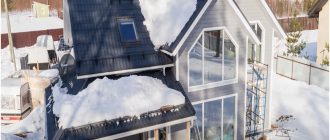The gas burner for roofing is designed to melt the bituminous coating and waterproof the roof during repair work. The tool is also used for drying concrete and bricks, heating metal and plastic when bent. To work with the device requires a cylinder with a working gas. Features of the work, the choice of tools and recommendations for creating a design with your own hands – all this information is contained in the article.
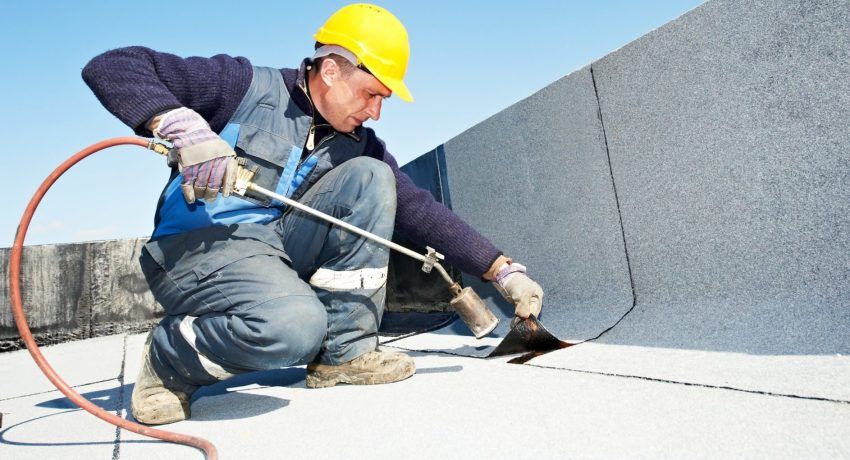
Roof gas burner: what it is
Very often, during the assembly and repair of roofing work, it is necessary to heat or dry the material, for example, when laying a waterproofing layer, to create a soft roof or melt bitumen mastic. To perform these tasks will help roofing gas burner. With the help of this device you can perform several types of operations, namely:
- drying of surfaces and materials;

- cutting or soldering metal parts;
- burning and removing the old paint layer;
- sealing of small cracks;
- melting of mastic based on bitumen;
- heating the sheets of material before laying;
- hardening of seams and joints;
- other work that requires the use of high temperature.
The roof burner is usually a torch with a hose and a fuel bottle. This design is very convenient, reliable and mobile. The volume of the gas cylinder can be different, the hose with a torch has a standard appearance. Flame control is carried out with the help of regulators installed on the device.
It is interesting! Roofing gas burner is a specialized unit of the gas-air type, which is used for installation and dismantling of soft roofing, as well as for drying various building structures.

Experienced foremen usually buy expensive professional models that are reliable and safe to use. But the self-taught master for home use is quite suitable for simple and small designs. Let us further consider how the choice of a particular equipment will affect the quality of work.
A simple burner is not intended for industrial use, where it is necessary to use it almost every day. In this case, you need a reliable model that can withstand uninterrupted operation and guarantee absolute security. At the same time, a cheap and simple design in the hands of a skilled and careful master is able to serve for several decades. Especially if she only has to use it once a season.
Regardless of which product is chosen: an expensive and professional burner with a balloon or a cheap household design – before each use it is necessary to check the tightness of the product, especially the connections, the fuel supply hose and the mouthpiece for clogging. If you miss even a minor defect, you can cause serious problems.
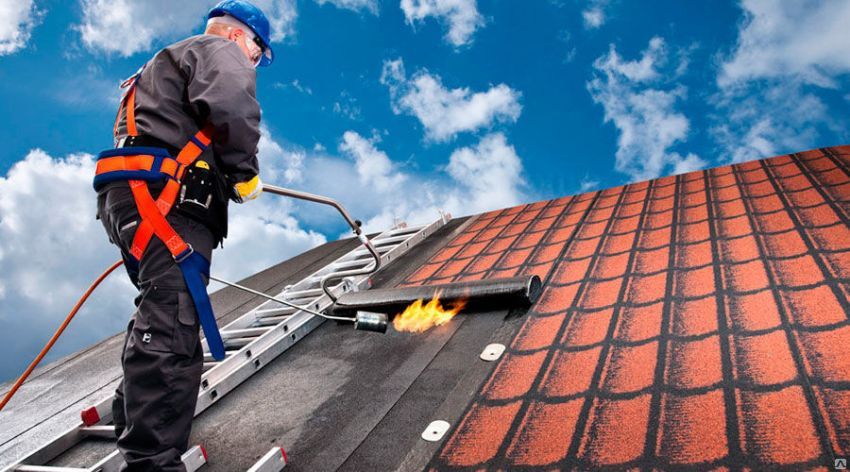
Helpful advice! Even for home use, you should not buy the cheapest burner. Most likely, this model will have a weak gearbox, which means that the performance of the tool will be on a par with the power of the blowtorch. Work with such a device will go very slowly.
At first glance, it may seem that tightening the gas cylinder to the roof is the most dangerous idea, especially since there are plenty of hand-held burners on sale. In fact, it is the burner on the spray can often become the causes of burns, fires and injuries. This is due to the sale of fake and cheap Chinese products. Safety burners with a large balloon is that the tank itself during operation is located far from the flame.
When buying do not pay attention to too cheap models. The main problem of such structures is that the technical passport indicates a working pressure of 0.05-0.08 MPa, which during operation is several times higher. The gearbox installed on the device is absolutely not designed for heavy loads, so a closed valve can simply not withstand such a voltage.
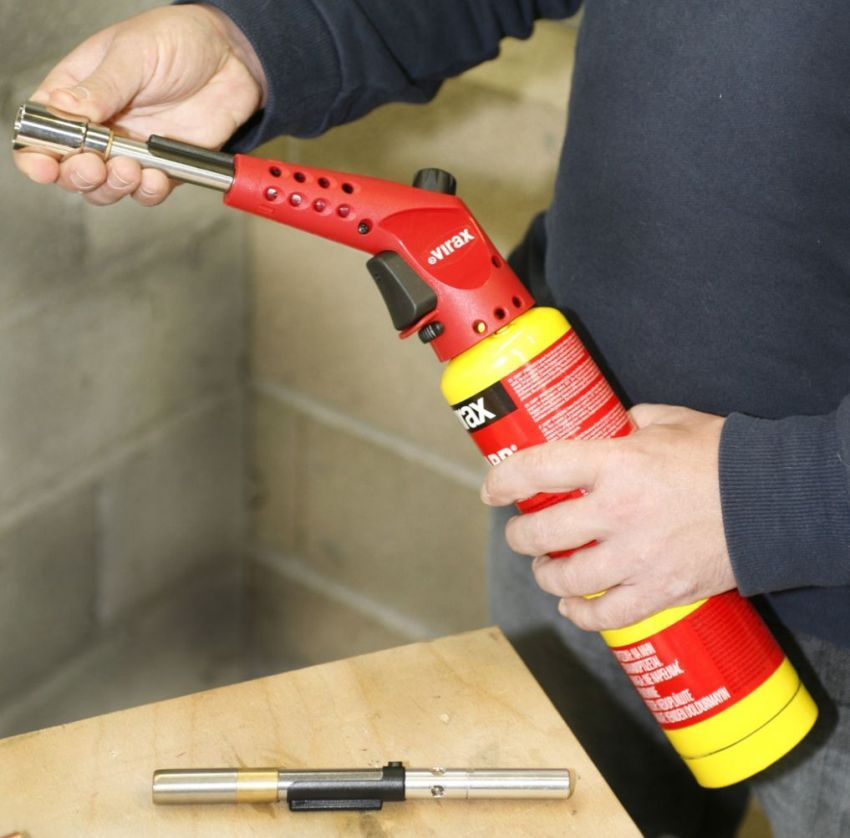
The design of a gas burner includes a handle, a gas supply tube and a metal cup attached to its end. A hose is connected to the handle through which the working gas flows from the gas cylinder. The handle can be made of plastic or wood.
The glass of a gas torch is designed in such a way that the flame during operation is protected from the wind. Glasses of different models have a different device, but the principle of operation is the same. The possibility of adjusting the length of the flame is also provided. Modern models are equipped with a special gearbox, where you can control the pressure and fuel consumption with a valve.
By pressing the lever of the handle opens the valve, and the gas enters the glass through the tube and hose. The combustible mixture of working gas and air is ignited by a lighter or with the help of ordinary matches. The combustion temperature of a gas burner is very high and can reach from 500 to 1500 ° C.
Absolutely all models of gas roof burners are equipped with an atmospheric air supply system. Also provided a device for adjusting the operating modes: mode of operation and standby mode. For the manufacture of devices are used only high quality and very durable materials, as the burner is heated to the highest temperatures. Usually the weight of the structure is small and varies from 1 to 1.5 kg, so the tool is easy to hold.
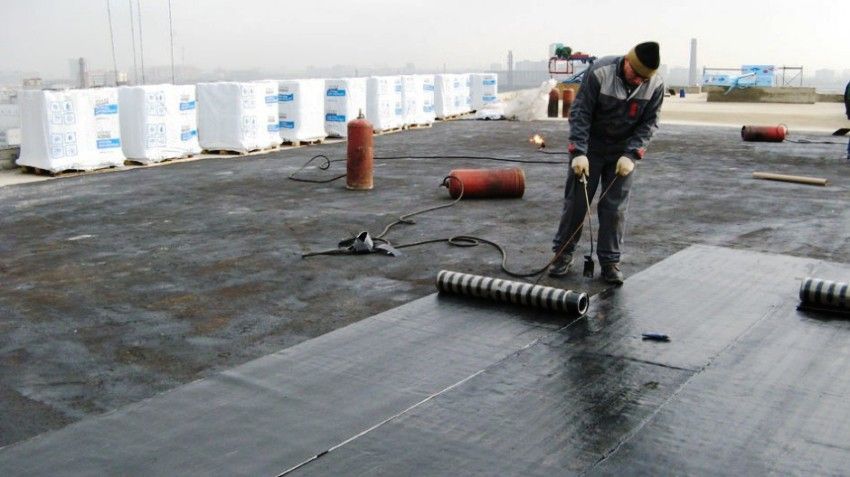
Modern roof burners differ from each other in the principle of adding oxygen to the fuel. Older samples require connection to an oxygen bottle, which is not very convenient. Modern designs take air from the atmosphere. Usually propane is used as a gas for the burner, but there are samples running on pure methane.
It is important! The length of the handle to hold the gas burner should be about one meter, but no more. At the same time, it is necessary that it be equipped with a special holder made of heat-resistant plastic or high-quality wood, so that the hands of the master are protected from burns.
The burner in the form of a nozzle for a gas cylinder with a collet connection is used only with the strictest observance of fire safety regulations, as well as in places where heavy construction equipment is not working and the risk of damage to the burner with a can is minimal.
The most simple models have a burning temperature of about 700-1000 ° C. Oxygen in the burner comes from the air, so it is always in short supply. In instruments with a higher cost, the flame temperature reaches 1200 ° C, while they have a specific shape of air inlets that increase the amount of oxygen in the burner.
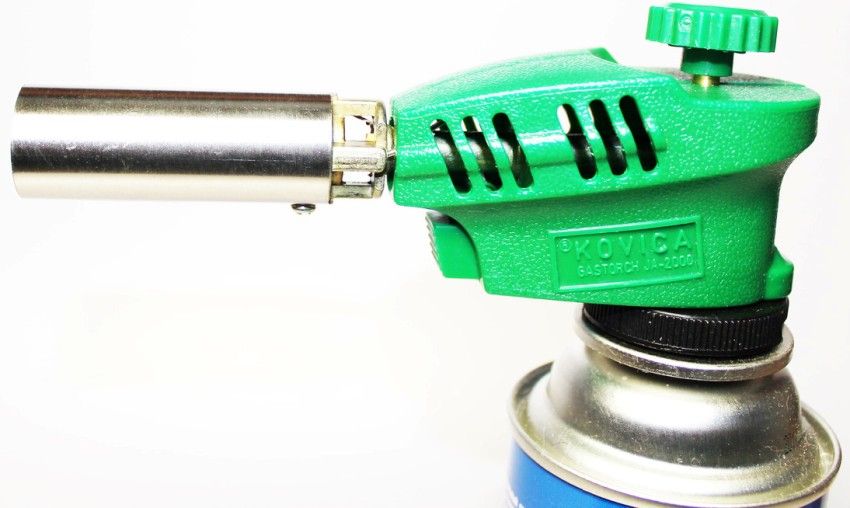
Manual flame burners of an ejector type have an even higher flame temperature. In these structures, the air enters the fire due to vacuum. Due to this, the flame reaches a temperature of 1500-1600 ° C. It is also possible to adjust the length of the flame relatively smoothly with the help of a crane. This model is not designed to perform fine work, but is great for warming large areas.
All types of gas burners are equipped with a flexible or rotary tube, piezo-ignition and a highly sensitive valve for adjusting the flame. Currently, there is a large selection of tools in accordance with its power and fuel consumption.
Ejector lamps for soldering have a special design and purpose. Most often, these tools use wizards to process non-ferrous metals. The high temperature and the ability to adjust the burner flame allow perfect soldering and hardening of metals or any other heat treatment that requires high temperature accuracy and a clearly defined flame cone.
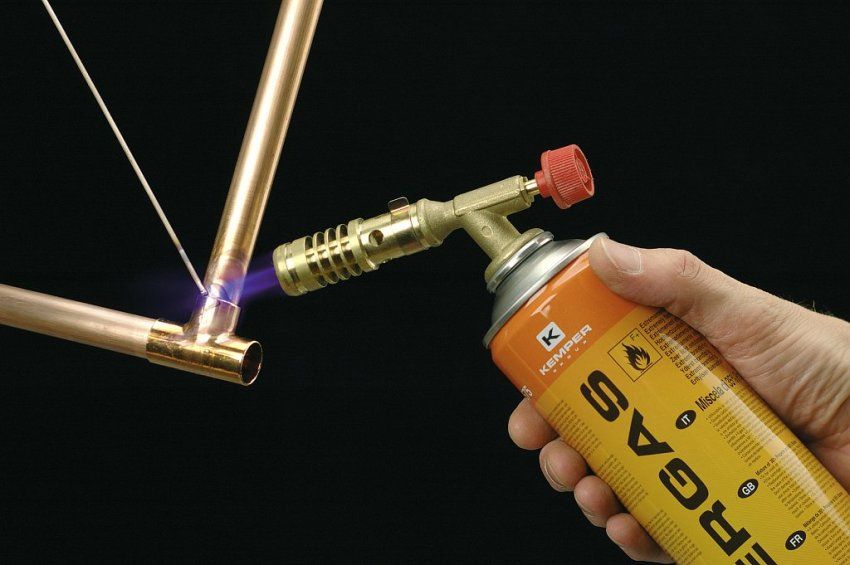
The dimensions of the burners on the spray can and nozzles can vary significantly, which allows them to be used in various fields. Most miniature models are used for soldering jewelry and thin metal. Although the instrument is not equipped with a device for supplying oxygen, it does an excellent job with delicate work.
Medium-type devices have a cone thickness of 0.3 to 0.9 cm and are optimally suitable for soldering copper and aluminum tubes. Large burners due to high power should be used in artistic forging or metal stamping.
For ejector burners, the use of the concept of an unstable flame is not entirely correct. Since even though occasional flashes are possible, this has little effect on the temperature in the core of the instrument’s flame.
Very often roofing material is used in roofing works, and it is impossible to create high-quality waterproofing made of this material without a gas burner. You will also need a tool to cover the roof with welds of modern materials.

The whole process of working with the burner can be divided into several stages:
- First, the preparation of the base for laying the cover is organized, for this it is necessary to clean it from debris. If required, you can level the surface with a screed.
- The entire surface is covered with rolled material so that adjacent sheets form an overlap of 8.5-9 cm wide.
- After aligning the material and performing the markup, the rolls are folded back and mounted on the base of the roof using a torch. To do this, the flame warms up the lower part of the roll and the base of the roof, after which the roll of material slowly turns and presses against the base.
- To prevent the appearance of wrinkles and bubbles with air, it is necessary to walk a hand roller on the attached canvas.
- At the final stage, you should also use a burner that heats up the seams of the material. After that, they also need to be sealed with a manual roller.
Before using the roof burner, you need to familiarize yourself with several important points:
- do not use the device at a temperature of 15 degrees below zero;
- if the roofing work is performed at low temperature, then it is allowed to use a liquid fuel burner;
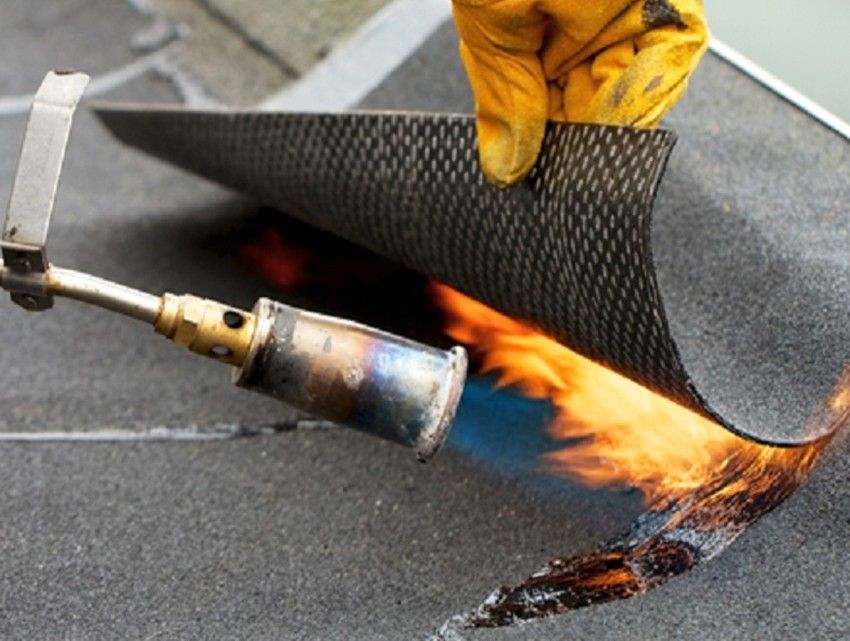
- the use of a gas burner with high technical characteristics for the roof makes it possible to lay about 500-600 m of roofing material per day;
- as the process takes place in the open air, the burner must work smoothly and have reliable protection against wind blowing.
The length of the torch torch should be 5 cm. The body together with the divider is put on the external thread of the nozzle. It is important to ensure that the flame of the gas burner with your own hands was even and without soot.
Helpful advice! In that case, if the threaded connection turned out to be free, it can be sealed with a FUM tape.
Repair and roofing work necessarily require the use of hot air or even open flame. Melt the bitumen, melt a roll of roofing material or solder the metal – a gas burner for the roof will cope with these tasks. To perform a significant amount of work, you need to buy a reliable professional model, and for home use you can create a design yourself.
